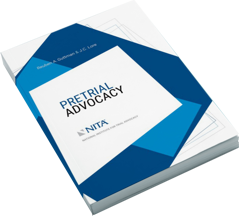By Reuben Guttman and Liza Vertinsky, July 25, 2022
In the 1990s, state Attorneys General learned how to leverage their resources when they retained private counsel to sue the tobacco industry. The private attorneys worked on contingency, meaning they did not get paid unless money was recovered from the tobacco industry. For their part, the states were able to take on novel litigation and draw from private investments in legal innovation without putting taxpayer dollars at risk.
Since the Tobacco Master Settlement Agreement was signed in 1998, state Attorneys General have worked with private counsel in similar relationships to bring an array of health, safety, and environmental suits focused on health impacts. These suits have included cases against drug companies, the most notorious of which featured opioid manufacturers and distributors.
In July 2022, 52 states and territories, along with many local governments, entered into a $26 billion multijurisdictional agreement with three major pharmaceutical distributors and a pharmaceutical manufacturer to settle claims arising from their opioid business practices. This multistate opioid settlement followed earlier ones reached with the now-infamous Purdue Pharma, as well as with McKinsey Consulting, Mallinckrodt, and Insys Therapeutics, and was followed by settlements with two more opioid manufacturers. The result was a multi-state enforcement effort by Attorneys General that is the second largest in U.S. history, exceeded only by the Tobacco Master Settlement Agreement.
While the state Attorneys General who participated in these suits and settlements were quick to herald them as a major success, with more than $30 billion in settlement funds and future monitoring and restricting future opioid deliveries, it is a stretch to say these are industry-changing events. Too little was done to educate policymakers and the public about the nature and sources of industry misconduct and to address the remaining vulnerabilities in the pharmaceutical manufacturing and distribution system. The results did too little to change the market ecosystem that fueled the epidemic.
The opioid litigation, like many cases brought against pharmaceutical and device companies, challenged marketing practices that have caused products to be used in ways that place profits ahead of patients, often putting patients at risk of harm. These lawsuits exposed practices that have resulted in professional standards of care that seem to be influenced more by Wall Street promises than by medical necessity.
Yet far too often, these cases are resolved short of full fact finding — called discovery — or without a public trial and a published court decision. Multi-million-dollar opioid settlement resolutions are touted in press releases as major successes while the culprit corporations admit to nothing, simultaneously telling investors that the settlement was a business decision and will not affect the long-term bottom line. Indeed, history shows that when drug companies pay hundreds of millions of dollars — or even billions of dollars — to resolve claims of drug marketing derelictions, their price per share is not affected, or may even get a boost because investors believe the settlement was a cheap fee for a license to break the law.
As much as these cases have provided an inkling of the profit-motivated misconduct of companies that Americans depend on for health care and a safe environment, knowledge of the depth of corporate misconduct remains just that, an inkling. Confidentiality agreements — often executed to prevent delays in producing the documents required for civil litigation — keep the most sordid details secret. And when there is no trial, the public gets to learn little about identifying wrongful conduct and legislators have difficulty making laws that prevent it.
Supreme Court Justice Louis D. Brandeis famously wrote that sunshine is the best disinfectant. While recovering money for public programs is essential, state Attorneys General must do a better job of also making public the lessons learned from these opioid settlements. If the drug industry is using subtle marketing tactics to manipulate the prescribing habits of physicians, for example, the public — including legislators, regulators, the press, and even physicians — must know the details.
Impact litigation must be designed to effect changes in industry behavior. Just as the National Transportation Safety Board investigates and issues a public report when a train wreck occurs, and just as Environmental Impact Statements are required for federal projects that could significantly affect the quality of the human environment, state Attorneys General should treat corporate health and safety derelictions as deserving of detailed public reports. And they should make it clear to the attorneys involved — whether in-house or under contingency agreement — that confidentiality agreements cloaking the secrecy of wrongdoing are to be used only sparingly, to protect legitimate trade secrets that are not essential to reforming industry practices, and not to hide information that is important to the public.
In the end, the public needs to know all the facts and policymakers need to act on the facts. A simple press release announcing a seemingly high-dollar settlement doesn’t achieve either of those objectives.
__________________________
Reuben Guttman, a partner with Washington, D.C.-based Guttman, Buschner & Brooks, has litigated under the False Claims Act to challenge pharmaceutical marketing practices. Liza Vertinsky is a professor of law at the University of Maryland Francis King Carey School of Law. Their article “Public-Private Litigation for Health” was published in the Utah Law Review.
Source: Article available on-line at Statnews.com.
